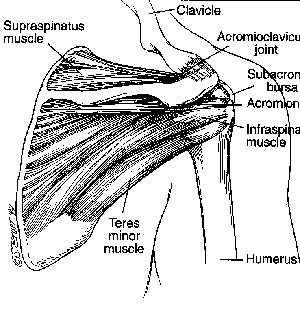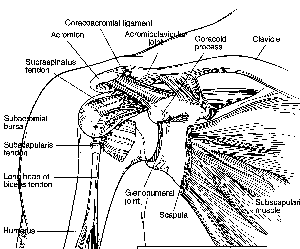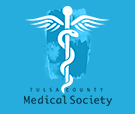 Rotator cuff injury is the most common cause of shoulder pain in adolescents and adults. The rotator cuff is made up of 4 tendons that come together to form a sheet of tissue that covers the shoulder joint. The rotator cuff (and not cup) powers and stabilizes the shoulder.
Rotator cuff injury is the most common cause of shoulder pain in adolescents and adults. The rotator cuff is made up of 4 tendons that come together to form a sheet of tissue that covers the shoulder joint. The rotator cuff (and not cup) powers and stabilizes the shoulder.
Injury to the cuff can also occur with a single time major injury; such as a direct fall onto the shoulder, which leads to a partial or full thickness tear.

Evaluation of the injured athlete is aimed at checking range of motion, strength and ruling out fractures and dislocations. X-rays are an integral part of the initial evaluation of the injured shoulder. The x-rays will help rule out fractures, dislocations, AC separations, AC arthritis, and calcific tendonitis. The x-ray will also better define the presence of "bone spurs" at the end of the acromion which can cause impingement of the rotator cuff onto the acromion. Magnetic Resonance Imaging (MRI) is a special radiographic tool used to better evaluate the soft tissues around the shoulder such as the rotator cuff and the joint capsule. MRI is very accurate in diagnosing full thickness rotator cuff tears.
Treatment is initially aimed at decreasing inflammation, regaining range of motion and increasing the strength of the rotator cuff and not the deltoid muscle. Anti-inflammatory medication such as ibuprofen or the newer medications (Celebrex or Vioxx) can be helpful in reducing the inflammation and pain.
Formal physical therapy is usually warranted when the injured athlete has severely limited range of motion and significant weakness.
Surgery in the form of removal of bone spurs (acromioplasty) is warranted only after prolonged non-operative treatment when a rotator cuff tear is not identified. If a complete cuff tear is identified, then rotator cuff repair surgery is usually performed early on after the injury. Surgery can be performed either arthroscopically or in open traditional fashion.
As you realize, this is a simplified look at rotator cuff injuries and treatment options. If you suspect you have such an injury, I recommend that you speak to your physician or orthopedic surgeon.
Good luck to all weekend warriors.







